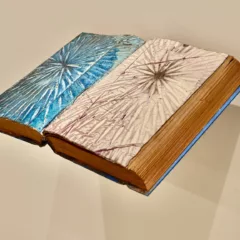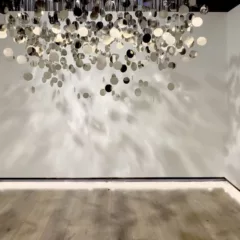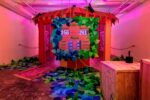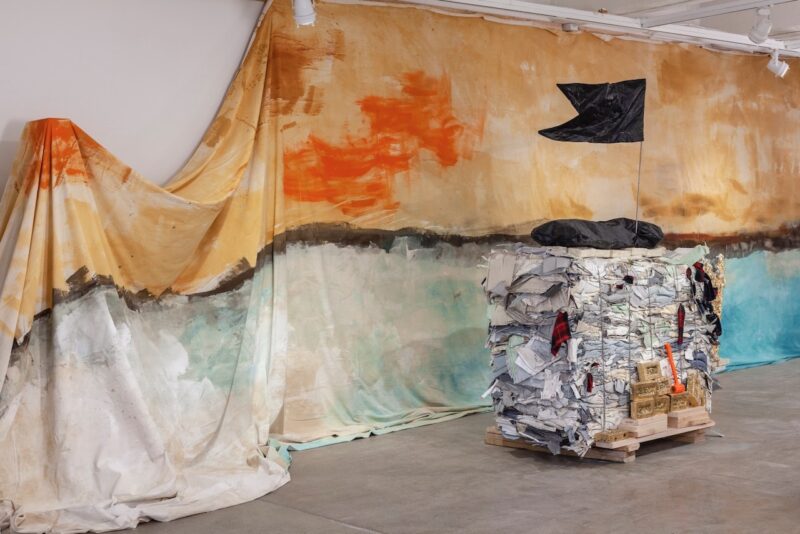
During a 2018 lecture at the Art Institute of Chicago, artist Henry Taylor playfully laments not having the status of fellow artist David Hammons who, in his words could “tell a gallery, ‘here’s a flashlight [and have that be the show]’. ‘No Henry, we need paintings from you.’”. Despite his paintings providing an unusual sense of depth and a warmth that challenges normative tenets of portraiture, Taylor at this point in the talk mentions that he “couldn’t get away with just putting dirt all through the gallery, you know what I mean?” With his new residency, though, Taylor seemingly does just that– Nothing Change, Nothing Strange is a wild collection of heavily scoured recycled objects rich with a lived-in, caked-on patina.
While Taylor’s quirky sensibilities are sometimes overshadowed by the immediacy of his paintings, his sculptures reveal an intentional gamesmanship that infuses the strict adherence to the non-meaning seen in a Duchamp readymade with, well, meaning. In his previous work, furious chaotic structures resembling dresser drawers or deconstructed wooden horses are adorned with pictures of African-American baseball players; branches protrude from the neck of a headless man in a suit as he attempts to run through some chaotic street, the branches firmly rooting him in place.
Based in California, Taylor brings his kind, free-thinking spirit to Philadelphia’s Fabric Workshop and Museum(FWM). This exhibit pushes Taylor’s range of work even further by presenting his first experimentations with textiles, where classic tartan designs area surprising launch pad for his explorations. According to the FWM website, “During his residency, Taylor collaborated with the FWM Studio team to assemble materials sourced from the Recycled Artists in Residency program (RAIR)—a non-profit organization focusing on the intersection of art, industry, and waste.” The results are a cacophonous, yet immersive venture into Taylor’s hefty, jagged form of world building. In one large piece, a piece of artificial turf is cut to look like a slave ship draped in cracked tiles, thick tarps and shredded plastic buckets, and a pine green tapestry. It’s like a sea-vessel, but it’s also a golf course from another dimension, losing its initial impression. This theme of objects losing themselves to create new forms, then those forms collapsing in on themselves as well, is repeated in the larger scope of the presented works.
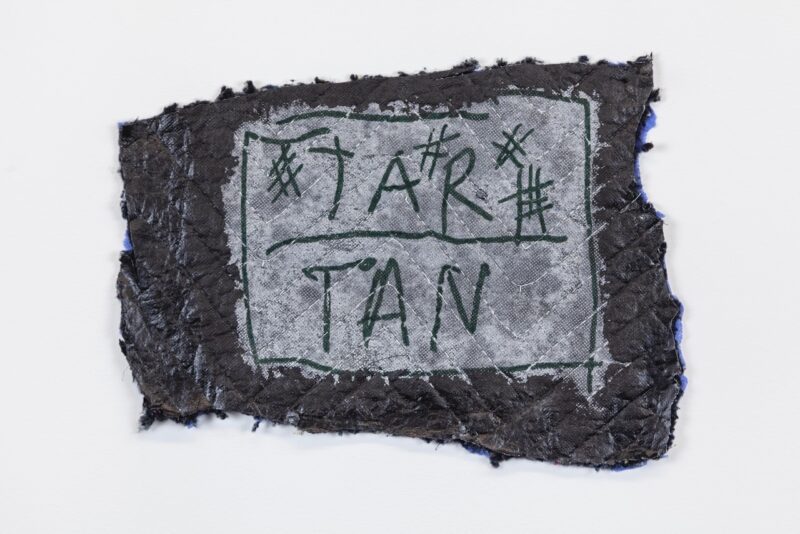
The textile pattern tartan represented a starting point for Taylor here, but even that is transformed. Commonly known as a Celtic cultural tradition, there is also an African and Caribbean tradition of wearing tartan. Taylor plays with this material by hanging it in a shredded state against rusting, bent bicycle tires or affixing it to larger sculptures. While tartan is often draped across some structures seemingly haphazardly, its presence is so deeply embedded into the skin of the work that it seems to disappear. A black flag with the words “tar” and “tan” stitched in thick fabric hangs on a back wall, the piece acting as both an anchor and a surveyor, as an end and a starting point.
In Nothing Change, Taylor’s approach is like that of a “hunter gatherer.” Objects make an appearance in bold ways–swaths of rigid material wind together to resemble beautiful, coarse discarded Afros; a mechanical light structure flashes like a neon sign in a bodega window, and large tapestries painted red, black and green–a sort of pan-African tartan if you will–unfold to breathtaking grandeur. Like tartan, the colors on these tapestries are hard, embracing toughness that belies the rigid, vast material they dance upon. Where influences like Cy Twombly seem to explore a kind of anti-social inner mind; and David Hammons’s takes on found object sculpture are considerable in their political savvy, Taylor’s work is transformative, constantly birthing a new idea around every corner, unveiling new themes throughout.
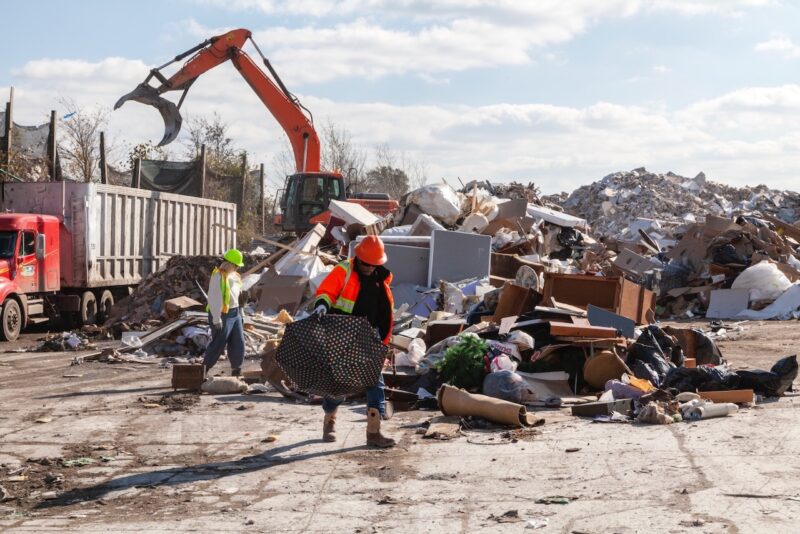
Taylor’s art is as gleefully anarchic, as he is. He spent the opening night being a kinetic, absorbable force, weaving–dare I say–among the crowd, himself a striking piece of fibrous art. A sweet California spirit submerged in a residency in the caustic northeastern environs of Philadelphia, Taylor’s more whimsical approach to sculpture, mixed media and now fabrics, takes on an entirely different context. Ultimately, Nothing Change, Nothing Strange is the realization of Taylor taking his turn at “throwing dirt,” found objects and fabrics around–the result is an installation that is both metamorphic and indeed strange and resolutely powerful.
Henry Taylor: Nothing Change, Nothing Strange is at the Fabric Workshop and Museum until July 23, 2023.


